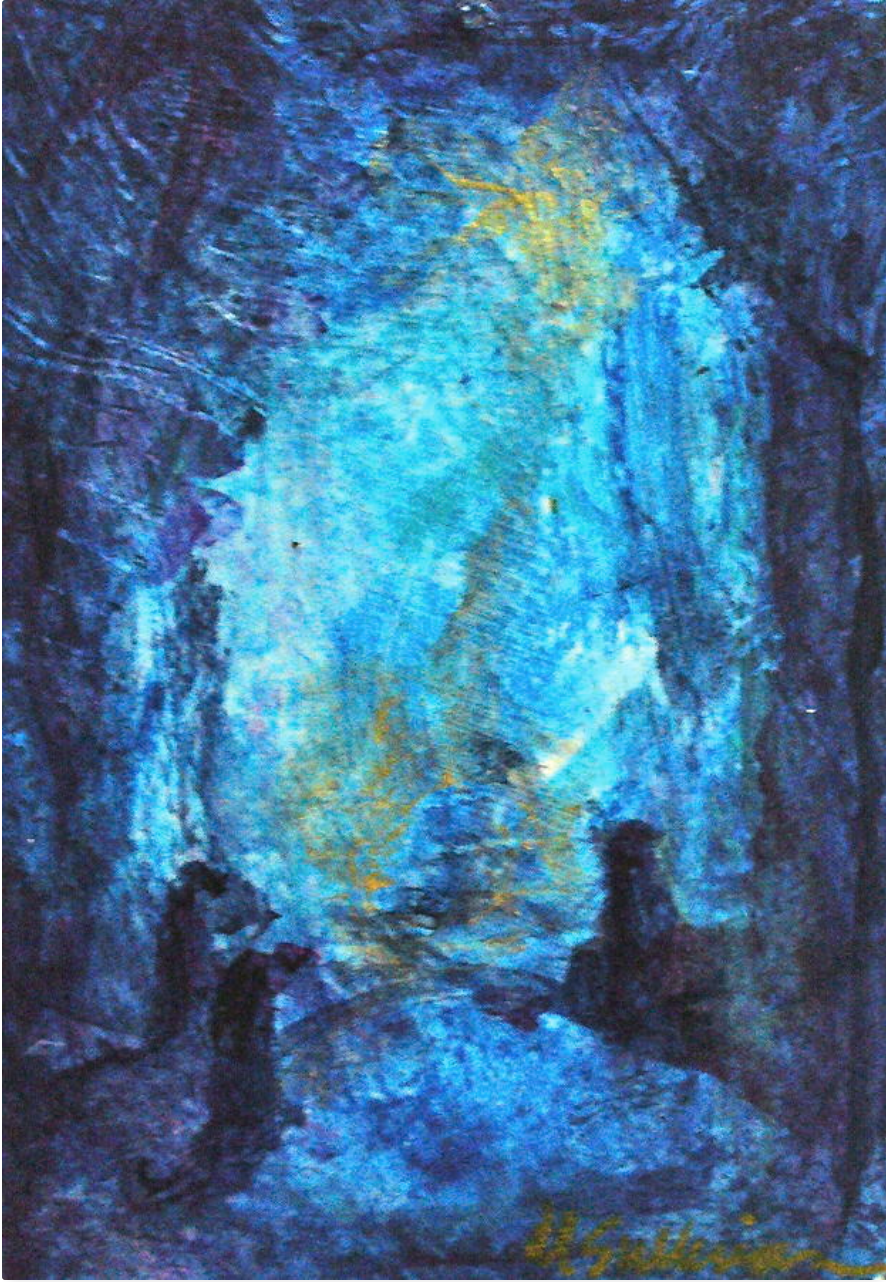
Advent is the season of preparation, reflection and discernment leading to Christmas. Some of the ancient Christians called Christmas the “little Easter.” Both were high holy days in the life of the Christian Community, times at which the community affirmed, re-experienced and celebrated its identity, vocation and practice. Oftentimes, it was a day for baptisms, which lead to both Advent (before Christmas) and Lent (before Easter) as times of catechism: teaching, learning, sharing, deepening, and commitment to faith. Advent then, like Lent, is a sort of abstraction, of deconstruction and reconstruction of what Christian faith means, necessitates and leads to.
Abstract art, while still somewhat foreign to our mainstream culture, is a deconstruction and reconstruction of the way that we see the world. By its definition, abstraction indicates a departure from reality in depiction of imagery in art. Rather than aiming for an accurate, directly representational portrayal of reality, it uses a visual language of shape, form, color and line to create a composition which may exist with a degree of independence from visual references in the world. This (re)interpretation of reality lends itself to meditation, reflection: new ways of seeing what is right in front of us. It seeks to capture the paradigm that logic can be blinding, that it is impossible to reproduce accurately visible reality, which in itself is an illusion.
In the Advent preparation of the Way to the mystery of Christmas, abstraction can be a helpful tool and language. Today you’re invite to meditate upon the painting “Nativity” by Mary Sullivan, uploaded to fineartamerica.com in 2012.
You can meditate on the image using Visio Divina [LINK to HOW TO] or use these prompts:
- As you let your sight wander and wonder what do you see in the deconstructed and reconstructed lines, shapes and texture?
- What do you not see?
- What do you see through what you don’t see or don’t recognize?
- Is there a truth that you glimpse in abstraction that you might not perceive in a more realist depiction?
- Correspondingly, is there a new truth you perceive in your Advent meditations, which are in essence an abstraction and reconstruction of the mysterious promise of incarnation: God becoming like us, so that we might become like God; the divine entering the material, that the material might transcend its limits and rationality?
If you like the painting you can purchase copies, and other reproductions HERE.